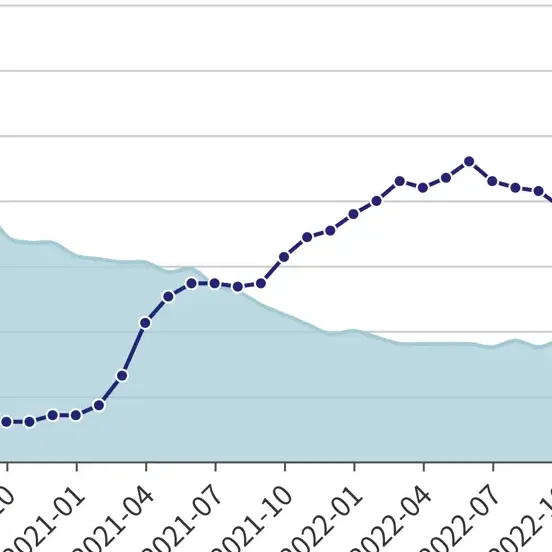Today's data selection: The Ministry of Housing and Urban-Rural Development said that there is no significant contraction in property market demand; the total dependency ratio in 7 provinces in my country exceeds 50%
Badai Wuliangye confirms volume reduction next year but still expects price increase
The reporter confirmed from channels close to the dealer that Wuliangye recently signed a contract with the dealer for the coming year. The payment price of the eighth generation Wuliangye will remain unchanged at 969 yuan until January 25 next year, and the planned contract volume will be reduced by about 20%. Reducing volume is conducive to maintaining channel price stability. However, Badai Wuliangye still has expectations for a price increase, and a new dealer said it may increase the price by 90 yuan at the right time. Another brokerage analysis believes that there is a high probability that Eighth Generation Wuliangye will raise its price by 10% next time.
The scale of digital talents in my country exceeds 5 million, accounting for more than half of them in Beijing, Guangdong, Shanghai, and Jiangsu
As digital transformation in various fields continues to deepen, the demand for digital talents is increasing day by day.
How big is the current scale of digital talent in my country? How big is the talent gap? What is the future trend of digital talents?
The report "Digital Talent Development Evaluation and Trend Suggestions", a subsidiary report of the "Talent Blue Book: China's Innovative Talent Development Report" released by Capital University of Economics and Business and China Social Science Literature Press, analyzed the current status of digital talent development in my country and summarized the prospects of digital talents. future trends.
"The main existing problems of digital talents include insufficient talent supply, urgent need to improve talent quality, unbalanced talent supply and demand structure, and lack of supporting talent policies. The development trends of digital talents mainly include the sharp increase in talent demand, compound capabilities becoming a necessary demand; and the obvious trend of talent return. , the geographical concentration of talents is obvious; the distribution of talents is pan-industry, and the cultivation of talents is ecological, "said the "Report".
In 2022, the scale of my country's digital economy will reach 50.2 trillion yuan, ranking second in the world in total, with a year-on-year nominal growth of 10.3%, and its proportion in GDP will increase to 41.5%. Digital talents have become an important driving force for the rapid development of my country's digital economy.
The population dependency ratio of 31 provinces and the total dependency ratio of 7 provinces in my country exceed 50%
The latest "National Aging Development Bulletin 2022" released by the Ministry of Civil Affairs shows that as of the end of 2022, the country's elderly population aged 60 and over will be 280.04 million, accounting for 19.8% of the total population; the country's elderly population aged 65 and over will be 209.78 million, accounting for 19.8% of the total population. 14.9% of the total population. The national dependency ratio of the elderly population aged 65 and above is 21.8%.
The dependency ratio, also known as the dependency coefficient, refers to the ratio of the non-working age population to the working age population in the population. The total dependency ratio is the sum of the juvenile dependency ratio and the elderly dependency ratio.
According to the "China Statistical Yearbook 2023" compiled and published by the National Bureau of Statistics, China Business News reporters found that in terms of the elderly population dependency ratio, Liaoning, Chongqing, Sichuan, Jiangsu, Shanghai, Shandong, Jilin, Hunan, Heilongjiang, and Tianjin ranked among the top Ten, all exceeded 24%, with the highest one in Liaoning reaching 28.77%.
There are 17 provinces with an elderly population dependency ratio below 20%, including Tibet, Xinjiang, Guangdong, Qinghai, Ningxia, Hainan, Yunnan, Fujian, Guizhou, Jiangxi and Gansu. Most of them are from western and southern China. Overall, these provinces The birth rate is high and the level of aging is low.
On December 13, at the 2023-2024 China Economic Annual Conference, Dong Jianguo, Vice Minister of the Ministry of Housing and Urban-Rural Development, said that from January to November this year, first and second-hand housing combined achieved positive year-on-year growth. "This total positive growth indicator shows that housing demand remains stable and has not shrunk significantly. Instead, the transaction structure has changed, with second-hand housing transactions replacing some new housing transactions."
There is no obvious contraction in demand in the property market, which seems to be different from the first-line experience. This year, sales of real estate companies are still sluggish. According to statistics from China Index, from January to November 2023, the transaction area of newly built commercial residential buildings in key 100 cities fell by about 5% year-on-year. The overall market is in an adjustment stage. The overall transaction volume of the property market in November was also year-on-year. All decreased.
However, this is only for the new housing market. If the second-hand housing market is taken into account, there may be different trends. CRIC data shows that the transaction area of second-hand housing in 17 key cities in November is expected to be 6.82 million square meters, a month-on-month increase of 4% and a year-on-year increase of 22%. In the first 11 months, the cumulative transaction volume of second-hand housing was 77.18 million square meters, a cumulative year-on-year increase of 32%.
Since November, the second-hand housing market in many places has picked up. CITIC Construction Investment said that in November, the transaction area of second-hand housing in key cities increased by 24.9% year-on-year in a single month, and the year-on-year growth rates of first-tier, second-tier, third-tier and fourth-tier cities were 22.0%, 32.7%, and -0.9% respectively.
Experts say residents’ excess savings may be reversed
Luo Zhiheng, chief economist of Guangdong Securities and director of the research institute, said on Baidu Finance’s #knowledgecolumn that overall, residents’ consumption is continuing to recover after the epidemic, and next year residents’ consumption is expected to continue to move closer to the pre-epidemic trend. Increasing excess savings could reverse the phenomenon. It is not that residents have no consumption demand, but are inhibited by many factors. For example, the three-year epidemic has led to a supply contraction in the offline service industry, which has not yet fully recovered; some off-plan properties have not been delivered smoothly, and residents have become more cautious in purchasing houses, etc., resulting in sluggish post-cyclical consumption of real estate such as home appliances, furniture, and home decoration; nominal economic growth The growth rate is lower than the actual growth rate, and the performance of the capital market is sluggish, resulting in residents’ lack of sense of gain from economic recovery, and to a certain extent, making residents more inclined to increase savings rather than consumption. In the first three quarters of 2023, the average consumption expenditure of residents accounted for 66.4% of disposable income, which is still 1.2 percentage points behind the 67.6% in the same period of 2019.





